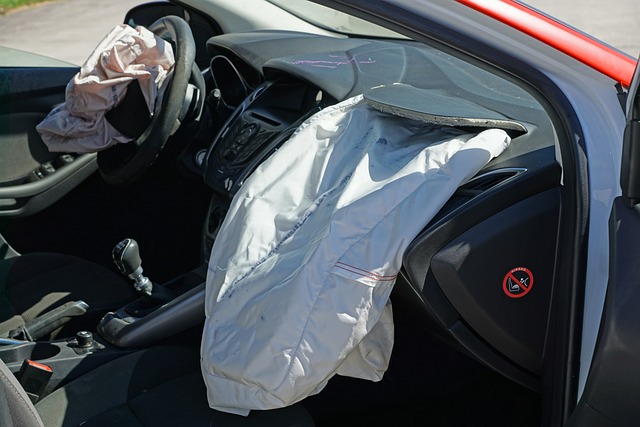Auto Insurance for High-Risk Drivers is tailored coverage for individuals with elevated risk factors, such as accident history or vehicle type, leading to higher premiums. Specialized insurers offer policies addressing unique needs, but rates are significantly influenced by claim history, age, location, driving behavior, and vehicle type. Proactive measures like defensive driving courses and maintaining a clean record can reduce costs. Policies vary by jurisdiction, mandating specific coverages while allowing optional protections. Success stories highlight adaptable solutions for diverse high-risk drivers, emphasizing transparency and tailored risk management.
High-risk driver coverage is a vital consideration for those facing elevated auto insurance premiums due to traffic infractions or rare driving conditions. This comprehensive guide explores the intricacies of navigating as a high-risk driver, from understanding your status and its impact on policies to securing the best deals and staying safe on the road. We delve into available coverage types, premium rate factors, legal requirements, and real-world tips, empowering you with knowledge in the world of auto insurance for high-risk drivers.
Understanding High-Risk Driver Status

High-risk driver status is a classification given to individuals who exhibit elevated levels of risk in terms of auto insurance. This category includes drivers with a history of serious or frequent accidents, traffic violations, or those who operate vehicles that are more prone to damage. Auto Insurance for High-Risk Drivers often comes with higher premiums due to the increased likelihood of claims and potential losses.
Understanding this designation is crucial for drivers in this situation as it can impact their ability to obtain coverage from traditional insurance providers. Many high-risk drivers turn to specialized insurers who cater specifically to these needs, offering tailored policies that consider individual risk profiles. By being aware of their status and taking proactive measures, such as maintaining a clean driving record and addressing any safety concerns with their vehicles, drivers can manage their auto insurance costs and gain access to more affordable coverage options in the long run.
The Impact on Auto Insurance Policies

High-risk driver coverage has a profound impact on auto insurance policies, particularly in the realm of rates and availability. When an individual is classified as a high-risk driver, it often leads to higher premiums due to the increased likelihood of accidents or claims. Insurers consider various factors such as traffic violations, at-fault accidents, and length of driving history to assess risk levels. As a result, high-risk drivers may find themselves facing significantly higher costs for their auto insurance compared to low-risk counterparts.
This specialized coverage is designed to offer protection for high-risk drivers who might struggle to obtain standard insurance. It provides an opportunity for them to maintain mobility while ensuring that they are adequately insured in case of accidents or other unforeseen events. However, it’s important to note that auto insurance for high-risk drivers often comes with specific conditions and requirements, including regular safety inspections and adherence to driving guidelines aimed at reducing the risk of accidents.
Common Challenges Faced by High-Risk Drivers

High-risk drivers often face unique challenges when it comes to auto insurance. One of the primary difficulties is finding affordable coverage. Due to higher accident and claim risks, traditional insurance providers may charge significantly more for their services, making it a financial burden for many. This issue is further compounded by limited options; specialized high-risk insurance plans might offer better rates but could come with stringent requirements or exclusions.
Another common challenge is navigating the complex underwriting process. Insurance companies thoroughly assess risk profiles, considering factors like driving history, age, and vehicle type. For high-risk drivers with poor credit scores or a history of moving violations, getting approved for auto insurance can be an arduous task. Moreover, they may struggle to find carriers willing to offer them coverage at rates comparable to their peers with cleaner driving records.
Types of Coverage Available for High-Risk Drivers

High-risk drivers often face challenges in finding suitable auto insurance due to their heightened accident risk profile. However, various types of coverage are available specifically tailored for such drivers. These include specific liability coverage options that protect against higher claims payments resulting from accidents caused by severe weather or other high-risk conditions.
Additionally, high-risk driver policies may incorporate enhanced medical coverage to handle more extensive healthcare expenses in the event of a collision. Some plans also offer roadside assistance services and rental car coverage during repairs, ensuring continued mobility despite their elevated risk status. Auto Insurance for High-Risk Drivers is designed not only to meet legal requirements but also to provide peace of mind by offering comprehensive protection tailored to mitigate potential financial burdens associated with high-risk driving.
Factors Affecting Premium Rates

When it comes to auto insurance for high-risk drivers, several factors significantly influence premium rates. One of the primary considerations is the driver’s history of claims and accidents. A higher number of previous incidents can lead to higher premiums as insurers perceive these drivers as a greater financial risk. Additionally, age plays a role; younger or older drivers often face elevated rates due to lack of experience or increased vulnerability.
Geographical location matters too. Insurers consider the area where the driver resides and operates their vehicle. Urban areas with higher traffic density and more frequent accidents tend to result in higher premiums compared to rural locations. Driving behavior, including speeding tickets and violations, also impacts rates. The more risky the driving behavior, the costlier the insurance. Moreover, the type and age of the vehicle driven can affect premium amounts, with older models or high-performance cars potentially incurring additional costs.
How to Get the Best Deals on High-Risk Driver Insurance

Getting the best deals on auto insurance for high-risk drivers involves a few strategic steps. Firstly, shop around – don’t limit yourself to your current provider. Compare quotes from multiple insurers who specialize in high-risk coverage; this will give you a better understanding of the market rates and potential discounts. Consider safety courses or defensive driving programs; completing these can often lead to significant premium reductions. Additionally, maintaining a clean driving record is paramount; any at-fault accidents or moving violations could increase your premiums, so drive cautiously and responsibly.
Utilize available resources like comparison websites and consult with independent insurance agents who are well-versed in high-risk policies. They can guide you through the intricacies of coverage options, deductibles, and exclusions specific to your situation, ensuring you get the best possible rate for your auto insurance needs. Remember, being proactive and informed is key to securing cost-effective high-risk driver insurance.
Legal Requirements and Regulations

In many jurisdictions, auto insurance for high-risk drivers is subject to specific legal requirements and regulations designed to ensure adequate protection on the roads. These rules often mandate certain coverage levels and specific policy features tailored to mitigate risks associated with insuring drivers considered higher than average in terms of potential loss or liability. Such regulations can vary widely from place to place, but they generally aim to balance affordability for high-risk drivers while ensuring minimal gaps in protection.
For instance, legal requirements may include mandatory personal injury protection (PIP) and property damage liability coverage, with additional optional protections like collision insurance recommended. Insurance companies are required to offer these policies to high-risk drivers, who should carefully review their options to select the best fit for their needs. Understanding local laws and regulations is crucial when navigating auto insurance for high-risk drivers, as it directly impacts both policy availability and costs.
Tips for Staying Safe on the Road as a High-Risk Driver

Staying safe on the road as a high-risk driver requires proactive measures and a commitment to responsible driving habits. One crucial tip is to maintain regular vehicle maintenance checks, ensuring your car is in optimal condition. This includes keeping an eye on tire pressure, brake function, and lighting systems—all vital for your safety and visibility. Additionally, consider defensive driving courses to enhance your skills; these can help you anticipate potential hazards and react accordingly.
Another essential aspect is being mindful of your surroundings. High-risk drivers should be extra vigilant, maintaining a safe following distance and avoiding distractions like mobile phones. Always follow traffic rules strictly, as this reduces the margin for error. Remember that auto insurance for high-risk drivers often comes with specific requirements and benefits; understanding these can equip you with the knowledge to make informed decisions regarding your coverage and driving practices.
Case Studies: Successful Navigation of High-Risk Driver Coverage

In navigating the complex landscape of auto insurance for high-risk drivers, several case studies highlight successful strategies and outcomes. For instance, consider a young driver with a clean record but a recent move to an urban area, significantly increasing their risk profile. The local insurance provider offered a tailored solution, combining comprehensive coverage with periodic reviews based on driving behavior and claims history. This proactive approach not only satisfied regulatory requirements for high-risk drivers but also fostered trust through transparency.
Another compelling case involves an elderly driver who, despite a decades-long safe driving record, faced challenges in finding affordable auto insurance for high-risk individuals. A regional insurer stepped in by offering specialized policies designed for senior citizens, incorporating safety features and regular health assessments to mitigate risks. This holistic approach resulted in reduced premiums and enhanced peace of mind for the client, demonstrating that effective high-risk driver coverage is both accessible and adaptable to individual needs.
